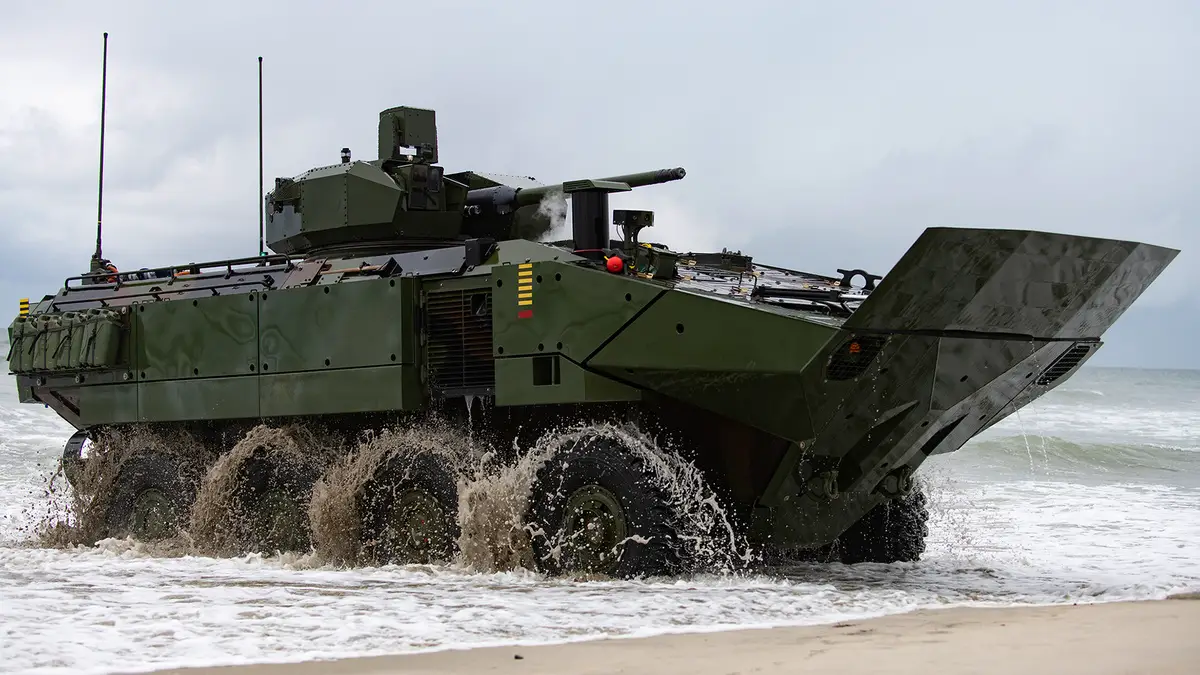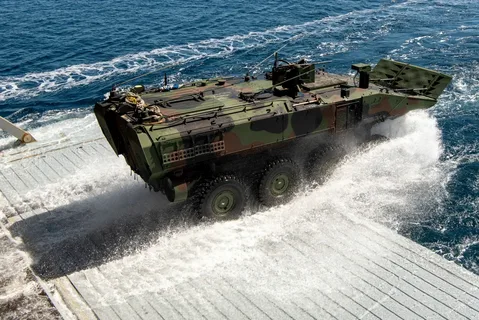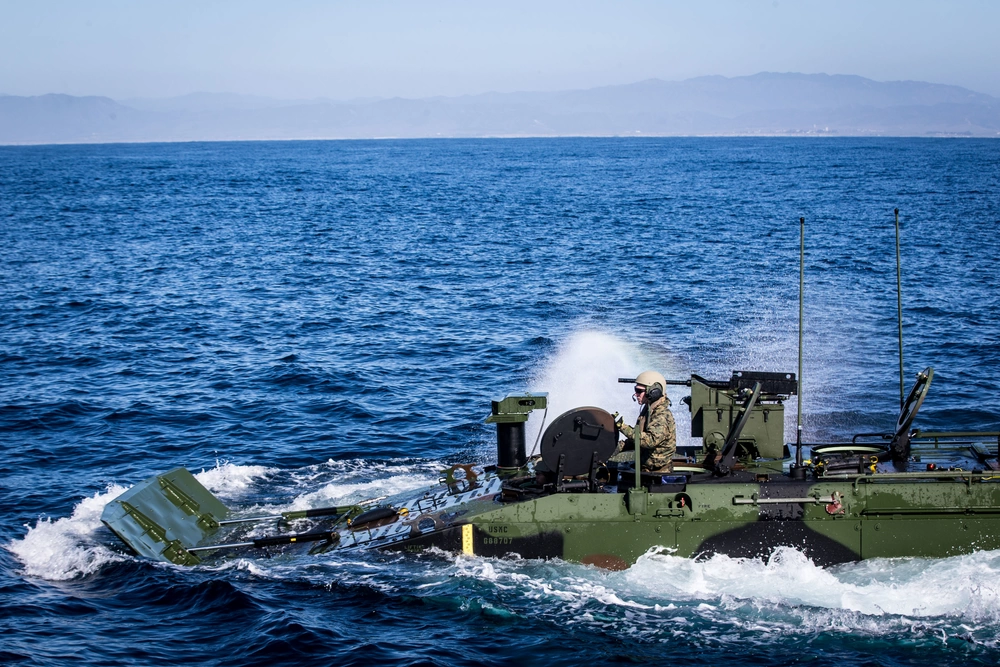The U.S. Marine Corps has ushered in a new era of amphibious warfare with the introduction of its cutting-edge Amphibious Combat Vehicle (ACV) equipped with a formidable 30mm cannon. This innovative vehicle represents a leap forward in the Marine Corps’ ability to conduct amphibious operations, combining enhanced firepower, mobility, and amphibious capabilities.

At the core of the ACV’s offensive capabilities is its potent 30mm Mk44 Bushmaster II cannon, a versatile weapon known for its accuracy and rapid rate of fire. The incorporation of this cannon significantly augments the Marine Corps’ firepower, allowing the ACV to engage both land and sea-based threats effectively. The 30mm cannon brings a new level of lethality to amphibious operations, providing Marines with the ability to respond decisively in a variety of scenarios.

The ACV’s amphibious capabilities set it apart as a crucial asset for the Marine Corps. Designed to seamlessly transition from ship to shore and back, the vehicle ensures the Marines maintain a swift and effective response in littoral environments. Its amphibious nature allows for the rapid deployment of troops, enhancing the Marine Corps’ ability to project power in diverse and challenging operational theaters.

The live demonstration of the ACV showcases its amphibious prowess, as it effortlessly maneuvers through water and transitions onto the shoreline. The vehicle’s design prioritizes both land and water mobility, enabling Marines to conduct operations in areas where traditional land-based vehicles would be impractical. This versatility expands the range of potential mission profiles, from beach landings to river crossings, positioning the ACV as a multi-functional solution for a spectrum of amphibious scenarios.

Inside the ACV, the crew benefits from a state-of-the-art interior designed for optimal functionality. The vehicle integrates advanced communication systems, ergonomic controls, and displays that enhance situational awareness. The crew’s ability to rapidly process information and make informed decisions is critical during complex amphibious operations, and the ACV’s interior design reflects a commitment to achieving these objectives.
Protection is another key consideration in the ACV’s design. The vehicle features modern armor, providing enhanced survivability for the crew against various threats on the battlefield. This balance between protection and mobility ensures that Marines can confidently navigate contested environments, knowing that the ACV is designed to withstand potential hazards.

In addition to the 30mm cannon, the ACV is equipped with secondary armaments and anti-tank capabilities, further expanding its role on the battlefield. This comprehensive armament suite allows the ACV to engage a wide array of targets, making it a versatile asset for Marine Corps expeditionary forces.
The introduction of the ACV with a 30mm cannon signifies the Marine Corps’ commitment to maintaining a technologically advanced and adaptable amphibious force. This new addition to the Marine Corps’ fleet enhances their ability to conduct amphibious operations with greater flexibility and firepower. As the ACV continues to undergo refinements and adaptations, it stands as a testament to the evolving nature of amphibious warfare and the Marine Corps’ dedication to staying at the forefront of military capabilities.





